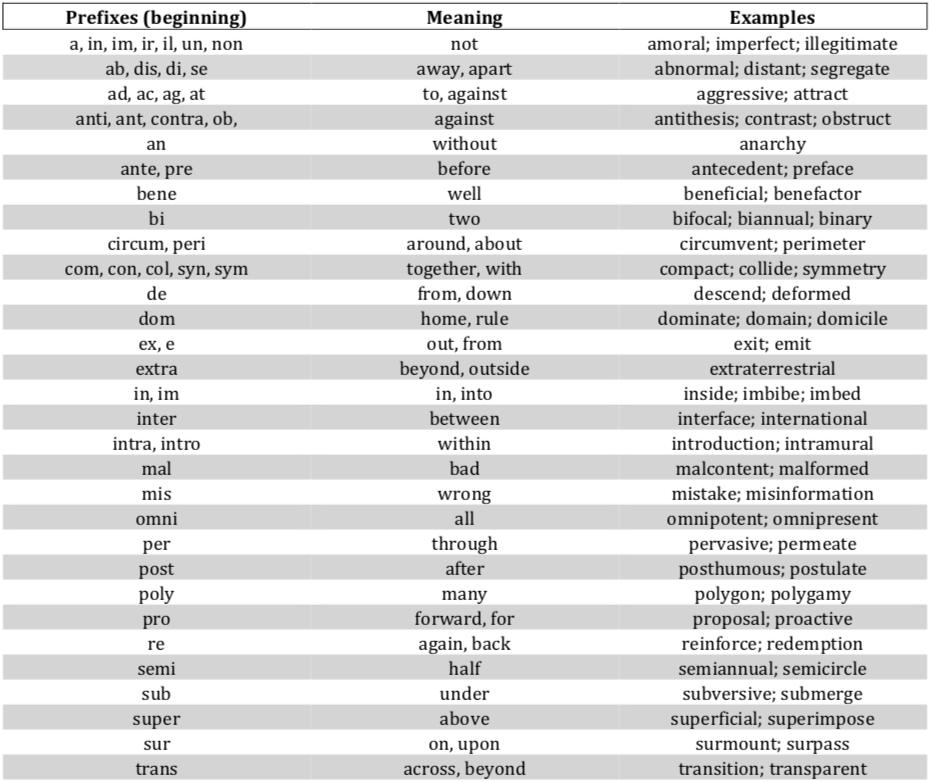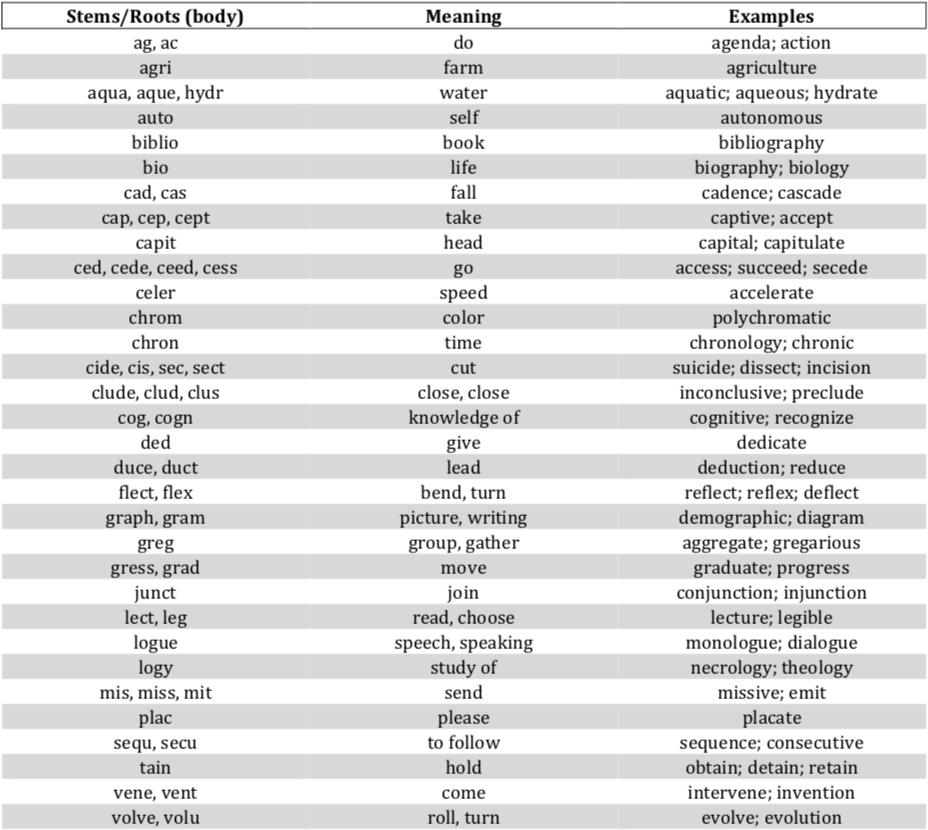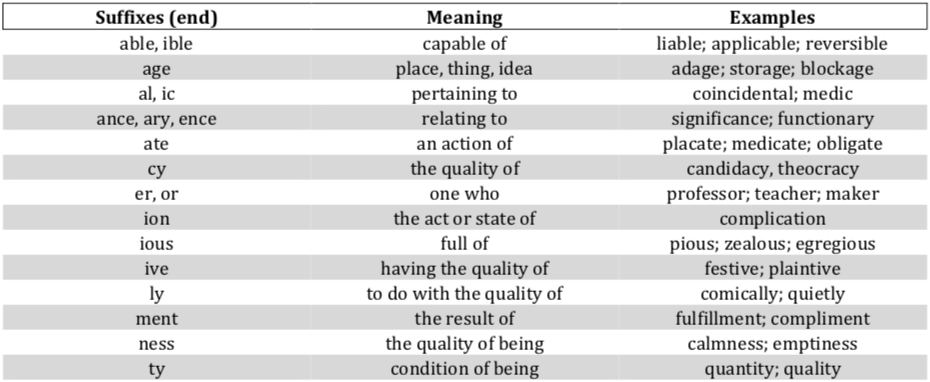
If you’re taking the ISEE or another ELA exam soon and wish to expand your word knowledge, use Piqosity’s ISEE vocabulary lists to prepare ahead of time! Here’s how to prepare for an ELA test that’ll quiz your word knowledge, from general ways of expanding your vocabulary to methods of using vocabulary lists that’ll maximize your memory and word-sleuthing ability.
How to Prepare for a Vocabulary Test
If you want to improve your vocabulary before a test, your studying should begin well ahead of time. Meaningfully expanding your vocabulary can be a lengthy process, since the best way to remember new words is with repeated exposure to them.
One of the most effective methods of expanding your vocabulary is reading! By reading, words that are new to you are presented with the context of the text, helping you form an understanding of the word’s use. If you want to improve your vocabulary, we recommend that you start by developing a habit of reading in your free time.
Reading at least slightly above your own reading level is the best way to maximize your exposure to unique vocabulary. Above all, you should read what interests you. If you’re interested in STEM topics or subjects like politics or sociology, read editorial articles from news publications or nonfiction books about the topics that fascinate you. If you prefer fiction and you want to learn vocabulary through a captivating story, pick up a literary classic or an acclaimed novel in whatever genre you’re in the mood for.
When you come across an unknown word as you read, don’t pass it by without a second thought! Reading by itself is a good way to be exposed to new vocabulary, but reading alone won’t always cement new words in your memory. Pay special attention to how a unique word is being used—take a minute to look up its dictionary definition and jot it down on a running list of new vocabulary. Then, you can use your own personalized list (in conjunction with other vocabulary lists) as you study for your upcoming ELA exam or vocabulary test.
ISEE Vocabulary: How does the ISEE Test Word Knowledge?
The ISEE (the Independent School Entrance Exam, commonly taken by K-12 students applying to private schools) tests students’ vocabulary knowledge across both its ELA sections.
Verbal Reasoning is the first section of the ISEE, and it tests students’ ELA skills as they pertain to vocabulary knowledge. There are two types of ISEE vocabulary questions on the Verbal Reasoning section: Synonym questions task students with matching a synonymous answer choice with a provided word, and sentence completion questions have students “fill-in-the-blank” in a given sentence with an applicable answer choice. Across both question types, the ISEE tests students’ ability to recognize the definitions of words both in and out of context.
Reading Comprehension is the third section of the ISEE, and it tests students’ reading abilities across a variety of ELA topics. One of these topics is Vocabulary in Context, which has students define words in a given passage using context clues.
Students who wish to do well on the ELA sections of the ISEE must be familiar with high-level vocabulary for their grade range. To help students reach their vocabulary goals, Piqosity has developed ISEE vocabulary lists for the lower (5th-6th grade), middle (7th-8th grade), and upper level (9th-12th grade) ISEE exams.
- ISEE Lower Level Vocabulary Lists
- ISEE Middle Level Vocabulary Lists
- ISEE Upper Level Vocabulary Lists
Though these lists are tailored to the ISEE, they’re representative of the type of vocabulary students should be learning in those grade ranges—even if you aren’t taking the ISEE, be sure to utilize them on your journey to a legendary lexicon!
How to Study Using Vocabulary Lists
Studying with vocabulary lists is an excellent way to methodically learn the definitions of unknown words and gradually commit them to memory. However, just reading through a list of vocabulary words and their definitions isn’t the best way to make sure you remember them. Here’s how to tactfully utilize vocabulary lists to improve your personal diction and build strong vocabulary-learning skills.
1. Create Vocabulary Flashcards
Whether you’re studying scientific concepts, historical events, or vocabulary, using flashcards (whether physical or digital) is known to be a highly effective learning tool. Queuing your memory with a vocabulary word and trying to remember its definition supports active recall, creating neural pathways that make it easier to summon that information at a later time.
Our ISEE vocabulary lists are already presented in a digital flashcard style that you can tap or click to flip, making it easy to review vocabulary when you have a few minutes. However, research shows that it’s even more effective to make your own flashcards! The process of making your own flashcards helps develop and strengthen that neural pathway between a word and its definition, more so than the use of flashcards made by somebody else. Especially if you make physical flashcards and use other memory cues, such as color-coding!
How to Study With Flashcards
Once you’ve created or sourced the flashcards you’ll use, there are a few different techniques you can use to effectively practice with them and develop long-term memory retention.
The spaced repetition (SRS) technique is widely endorsed by foreign language learners who must commit many words to their long-term memory. In SRS, you’ll start with one set of (say, 50) vocabulary words—across your study sessions, you’ll add in a higher frequency of new vocabulary words and gradually phase out words you’ve become familiar with. This utilizes the spacing effect to encode the information in your long-term memory more effectively.
The testing effect is why completing practice questions is the best way to solidify your knowledge of a concept (and why taking multiple practice exams makes it easier for you to tackle your exam on the real test day). Prompt yourself with a word and try to recall the definition—then flip it to confirm or correct what you had in mind. That simple method of attempting to recall the information and addressing your results is the testing method; combined with SRS, the testing effect can maximize your long-term memorization of new vocabulary.
2. Break Down Terms into Word Parts
Many words in the English language are made up of word parts. Roots are the building blocks of words—all words contain a root, which you can think of as the core meaning of the word. Many words also have one or more affixes, which attach to a root word to make a new word. An affix added to the beginning of a root is a prefix, and an affix added on the end of a root is a suffix. Some words have multiple roots and/or affixes.
Oftentimes, prefixes modify a word’s meaning while suffixes typically modify a word’s part of speech or tense. For example, take the root sect, which means “cut”. If you add the prefix bi-, meaning “two”, you get bisect: to cut/divide into two parts. Then, you can add the suffix –ed to put the verb in the past tense: bisected.
Take the time to break down complex words in your vocabulary list into their word parts and research their etymology. A word’s etymology is its origin—you’ll see how the word evolved over time while learning its word parts. Not only will this help you remember the meaning of those words in particular, but being familiar with common word parts and their meanings will help you piece together the meaning of unknown words that you come across.
These tables list some of the most common affixes and stems, together with examples—study and reference them as you learn from ISEE vocabulary lists.
Common Prefixes

Common Roots/Stems

Common Suffixes

3. Write Sentences Using Difficult Words
Reading is an excellent way to build your vocabulary because it provides context to help you learn how words are used. The drawback of using vocabulary lists is that the words are presented without context, so it can be difficult to understand the use case of a difficult term. An important aspect of context, for instance, is that it demonstrates a word’s connotation—whether it’s something positive or negative. (For example: While they both mean a smell, stench has a negative connotation while aroma has a positive one.)
To help you contextualize the new words you learn, we recommend writing your own sentences! As you study your way through vocabulary lists or flash cards, write an example sentence for each term. This way, you’ll be contextualizing its meaning while strengthening your memory of the word. If you struggle to figure out how to do so, look for an example sentence online as inspiration. (Online dictionaries typically provide a sample sentence under each word’s entry.)
4. Identify Synonyms
Our final tip for studying with vocabulary lists is taking the time to find synonyms for the new words you’re learning!
As you leaf through your flashcards or go line-by-line down a vocabulary list, get an online thesaurus ready and explore the synonyms of each word. This will help you make connections between your preexisting vocabulary knowledge and new terms you’re learning, helping you remember definitions and form associations between those ideas. Combine this with all the other strategies above to strengthen your memory of new terms and vocabulary-learning capabilities ahead of the ISEE vocabulary test or a different ELA exam!
Comprehensive and Affordable Online ELA Courses and ISEE Test Prep
We hope this guide to ISEE vocabulary and how to study using vocab lists is useful to your vocab prep! Make sure to use Piqosity’s ISEE vocabulary lists—each grade range has hundreds of strong vocabulary terms suited to different grade levels, so it’s a perfect resource for expanding your word knowledge.
Whether you’re taking the ISEE soon or want to improve your reading skills, Piqosity has you covered! Along with our full-length, online ELA and Math courses for grades 6-11, we offer a market-leading ISEE prep course, which includes detailed topic lessons, hundreds of questions, and 12 full-length practice tests, together with personalized practice software that identifies your weaknesses and helps you study effectively. (Plus, if you’re taking the ACT or SAT sometime in the future, we have comprehensive courses for those tests, too!)
Sign up for an account and you can take a No-Cost Mini Diagnostic test—no credit card required.



Leave A Comment